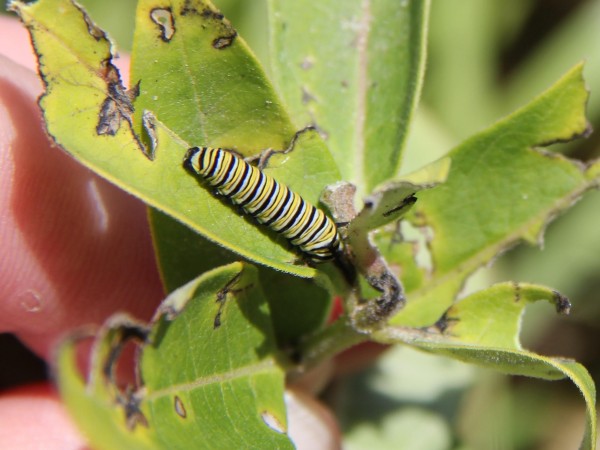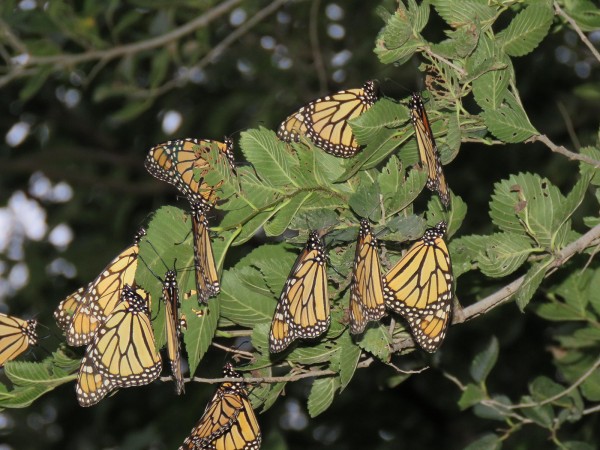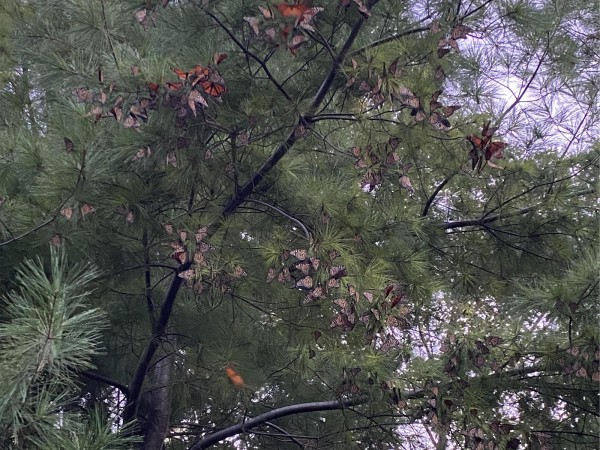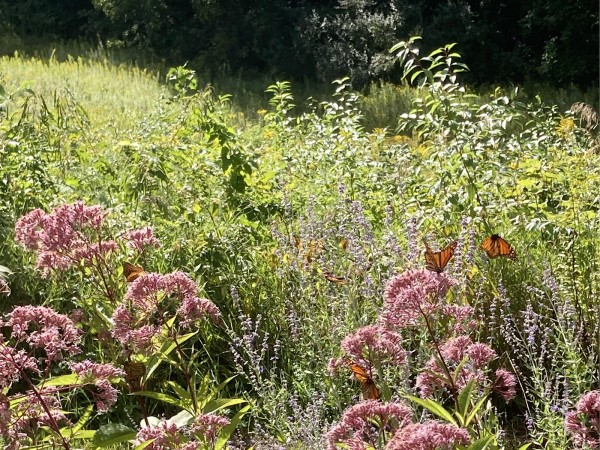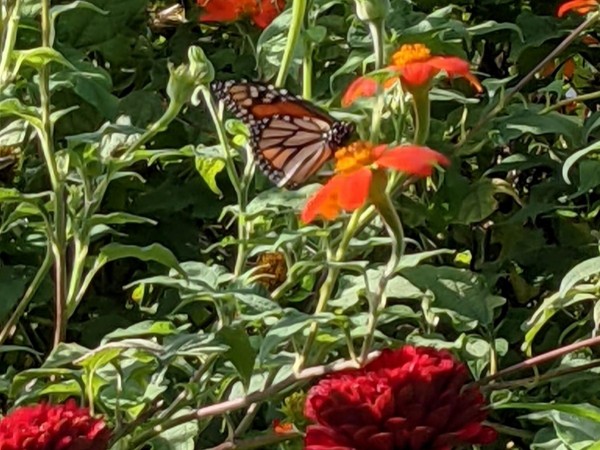Eastern Monarch Fall 2021 Report #2
Published: 09/15/2021
Note: Observations highlighted in this report are from September 3–9. To explore more recent observations, check out "The Leading Edge" section of the news update and explore our maps.
Eggs and Larvae
High numbers of eggs and larvae were observed in the southern U.S. Farther north, Journey North citizen scientists noted late season larvae and deteriorating milkweed.
Wanda in Townsend, TN: "Checked several patches of milkweed and found [24] eggs in Cades Cove, Great Smoky Mountains National Park." (09/06/2021)
Michele in Tarbutt and Tarbutt Additional, ON: "The latest larva I've seen lhere in the last 10 years. Found on a 6" milkweed growing out of the asphalt near a small stand between the ditch and the road. Milkweed very small and bedraggled. Haven't seen an adult in 3+ weeks." (09/09/2021)
Fall Roosts
Fall roosts were largely been concentrated in southern Ontario and the Upper Midwest and Great Lakes. Roosts show us where large concentrations of migrating monarchs are found and reveal the main migration pathways to Mexico. Check out the Monarch Fall Roost map to explore more observations.
Bud in Oakland, IA: "This is a small amount of the Monarchs that I have been getting the last few nights. the weather has been warm during the day and cool at night.. the butterflies have been roosting in the woods at night and then staying there all day long. At night the temps are in the 50's. The hummingbirds are busy at my feeders as well. I think that fall is coming. At most we think that there are about 50 butterflies." (09/08/2021)
Sherri in Oak Harbor, OH: "They had been gathering late afternoon and evening. In our pines, American elm, and buckeye trees. There were at one point between 400 and 500 Monarchs flying and landing for the night. Amazing sight. This is day 8 for us seeing this." (09/08/2021)
Peak Migration
Similar to fall roosts, reports of peak migration largely came from southern Ontario and the Upper Midwest and Great Lakes. But activity also increased along the Eastern Flyway in the Northeastern U.S.
Bob in Cape May Point, NJ: "One hour count at Cape May Point NJ. Many nectaring. Highest count this season." (09/03/2021)
Darlene in Leamington, ON: "[75 monarchs] at Point Pelee National Park at the tip, 6:10-8:10 p.m." (09/06/2021)
Susan in Village of Kohler, WI: "Sunny with light NW wind. Watched for one hour as gradual west to southwest flight occurred in between nectaring sessions with some chasing in groups of 6. A few flew over the tree tops without stopping. I also looked up to check for high flyers and did see one heading due south while gliding on a wind current. It's bright orange color was vivid against the deep blue sky. My best day so far for migrating monarchs." (09/06/2021)
Steve in Burlington, CT: "The migration has begun as seen in our yard over the last week. At least 24 on our Joe-pye Weed. Many also on the butterfly bushes and on the Verbena. Enjoying the best sightings in many years." (09/07/2021)
Fueling Up
Intense nectaring was widely reported as monarchs are getting ready for a long journey and building the lipid reserves they’ll need for overwintering.
K in Lakeville, MN: "At least 8 monarchs spotted late morning. They were not cooperating for a count as they were very busy moving between flower beds. Nectaring mostly on Mexican Sunflowers, zinnias. One spotted on a small late flowering Joe-Pye Weed and one on flowering spearmint." (09/06/2021)

